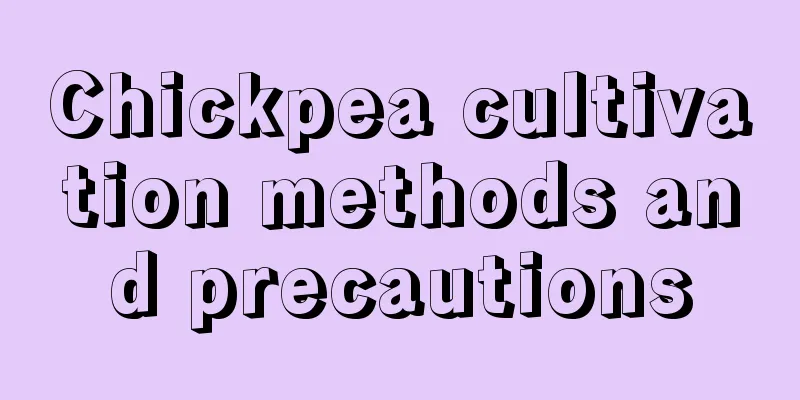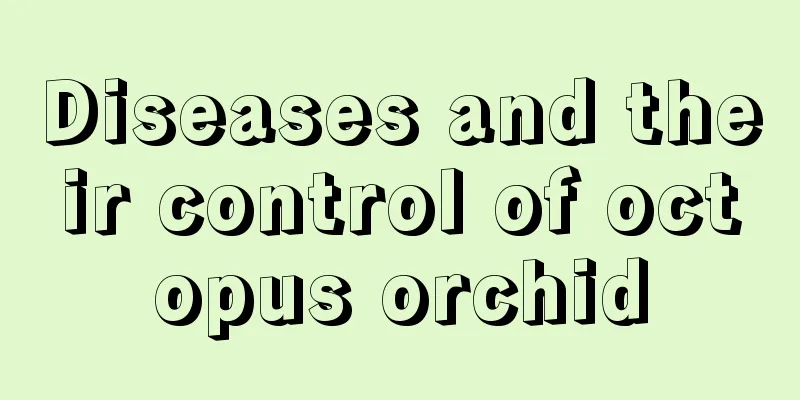Chickpea cultivation methods and precautions

1. Maintenance methods1. Soil: Chickpeas are not very demanding on soil quality. They only need well-drained, loose, and breathable soil. Generally, sandy loam can be used. 2. Water: Chickpeas are very drought-resistant, so you don’t need a lot of water when watering them. Just keep the soil slightly moist. Too much water or rainwater stored in the soil will cause poor plant growth. 3. Nutrients: Organic fertilizer is often used as fertilizer. Sprinkle the fertilizer on the soil and then turn it over to mix the soil and fertilizer evenly. This will allow the chickpeas to be better absorbed when planted. 4. Light: It is a plant that likes light. Long daylight can shorten its vegetative growth period, and short daylight does not prevent it from flowering. However, if it absorbs enough light, it can grow better. 2. Breeding techniques1. Pruning: After planting, the wilted and yellowed leaves should be properly pruned, and weeding and loosening of the soil should be done to better promote its absorption of nutrients. 2. Reproduction: Sowing is usually used for reproduction, and the time can be around mid-to-early April. The best time is to control the temperature at around 12 degrees Celsius. Select healthy seeds and place them in the soil, then cover them with a film. Small sprouts will emerge in about a week. 3. Problem diagnosis and treatment1. Dwarfing disease: A common disease in chickpea cultivation is dwarfing disease, which is not visible during the initial growth period but becomes obvious as the plant grows gradually. Prevention of this disease should be started after planting. You can choose to dilute carbendazim or mancozeb and spray it on the branches and leaves. 2. Cotton bollworm: A common insect pest is the cotton bollworm. This insect is very rampant and has a great impact on the growth of chickpeas. It needs to be diluted with thiosulfan and sprayed to kill it. IV. Other issues1. How to store: After picking the chickpeas, they should be dried and dehumidified first, then fumigated with aluminum phosphide, and then stored. When storing, it should be placed in a ventilated, dry and low temperature place to ensure that the chickpeas can be stored intact. 2. Is it edible? Chickpeas are edible. They can be said to be a kind of vegetable. Both the beans and the young leaves are edible. |
<<: Breeding methods and precautions of silver thorn
>>: Cultivation methods and precautions of tea oil
Recommend
Flowering period and maintenance of jasmine
1. The flowering time of this plant In fact, just...
Peony Growth Environment Conditions and Characteristics
Peony Growth Environment Conditions and Requireme...
Where is the best place to plant baby's breath?
Gypsophila planting area Gypsophila can be plante...
Iris cultivation methods and precautions
Soil requirements Irises do not have high require...
How long does it take for Polygonatum sibiricum seeds to germinate
1. How long does it take for the seedlings to eme...
What are the cultivation methods and precautions of perfume lemon trees?
How to grow perfume lemon Perfume lemon belongs t...
The cultivation and precautions of the seeds of fortune
The fortune seed, also known as cinnabar root, re...
What fruit trees are suitable for planting in Guangdong? What fruits are of higher value and better planting prospects?
The climate characteristics of Guangdong are hot ...
The difference between California poppy and corn poppy
1. Different appearance California poppy: It is a...
Epiphyllum diseases and pests and their control
Epiphyllum pests aphid Aphids are a common insect...
How to fertilize Chinese evergreen?
Fertilization method of Chinese evergreen Fertili...
How to care for pineapple flowers? How to care for pineapple flowers at home
Bromeliad Growth Conditions Pineapple flowers lik...
What are the whole grains?
1. Rice Rice generally refers to the grain with s...
How to take care of the newly bought rich coconut
1. Lighting The newly bought rich coconut palm do...
How to prune a large pot of green radish
When to prune the large pot of green radish Large...









